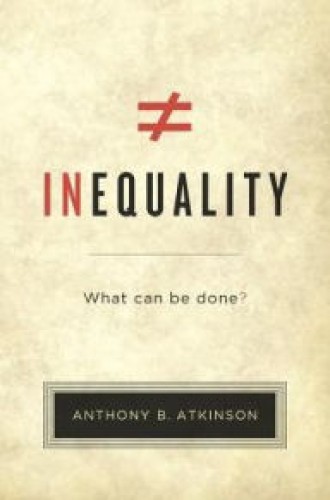Cultivating equality
Income inequality is front-page news, but few sources explore the complex data related to it as carefully as British economist Anthony Atkinson. As an economic adviser in Europe, Atkinson has observed the impacts of many attempts to address income inequality. His book is oriented toward the European scene, but the United States is included in most of the statistical comparisons, and Atkinson’s policy suggestions are worthy of consideration by all who seek fair and equitable outcomes.
In the first part of the book Atkinson employs charts and graphs to show income distribution trends stretching over a century. Despite the complexity of the data, Atkinson sets up the problem of income inequality in convincing fashion and prepares readers for his discussion of solutions.
Read our latest issue or browse back issues.
The second part of the book spells out 15 proposals for action to reduce income inequality. Many will find these proposals radical. The third part of the book considers the feasibility of his plan.
Two principles underlie his proposals. First, technological change and the labor market should be socially constructed to prevent domination by a powerful few so all those seeking work can receive a wage that provides a meaningful standard of living. Second, when the fear of destitution is eliminated by benefits that are not means-tested, people willingly seek to improve their situation, and they are less resistant to a broad-based progressive tax system that eliminates loopholes for special interests. Transfers of income or wealth, when properly constructed, do not hurt productivity on either side of the transfer.
Consider Citizen Joe, who lives in a world in which Atkinson’s policy proposals are in place. The law requires employers to consider the social costs of new technology, which means that robots complement his labor, not eliminate it. Furthermore, labor negotiations must pass the scrutiny of a Social and Economic Council that is designed to give unbiased perspectives on labor-management relations.
Joe knows that if the private sector has no job for him, he will have access to a public job at a minimum wage that is set at the living-wage level. Joe will be guaranteed a positive interest rate on his savings, and when his children reach adulthood they will be granted a sum of money designed as a minimum inheritance. The amount of Joe’s income that is exempt from tax is lower, and salary increases beyond that level face rising tax rates, with the top rate on high income reaching 65 percent. Inherited and significant gift money will face a progressive tax structure. Property taxes are progressive.
Joe receives an annual subsidy for each of his children. A social security program subject to the income tax helps to maintain basic living standards, so Joe need not fear the financial effects of retirement, or of disability, or other misfortunes. The funding of these provisions comes from the unified progressive income tax and from a public investment fund that earns returns by investing in companies and property that earn income.
Many Americans may be dismayed at the number of benefits Joe receives. Surely this arrangement would result in huge government deficits, undeserving folks would take advantage of government transfers, and entrepreneurs would begin a mass exodus, either closing or reducing the size of their operations because of the high tax rates.
Atkinson does not minimize the challenges involved in realizing his proposals; nor does he regard them as an all-or-nothing package. But he does not believe that his proposals would shrink the pie of production. And if increased equity were to involve a slightly smaller pie, he suggests, the resulting social order may be preferred. When poverty declines, the social costs of poverty fall, and despair is replaced by hope.
The standard economic analysis of the impact of the welfare state ignores the safeguards that are built into the institutional design of the social protection and is typically based on models of economic behavior that ignore the potential positive contribution of the welfare state to economic performance.
Contrary to the assumption of many wealthy folks, Atkinson believes that if poor people are given the opportunity, they will choose self-sufficiency over means-tested welfare payments.
Can we afford Atkinson’s proposals? The short answer he gives for the United Kingdom is yes, but he also gives this answer based on detailed economic modeling of costs and benefits: it depends. Atkinson carefully spells out the factors on which the answer depends and concludes in an optimistic tone that should inspire readers to take seriously the challenge to do something about the increasing income disparities that are fragmenting our social order.
I recommend this book with enthusiasm, but it is not a quick read. Some may pick selected chapters and scan the summaries first to get the big picture before digging into the details. The graphs and charts are a valuable resource because they show trends and country comparisons that are helpful in any discussion of income disparity. Transitioning to a new welfare policy regime would not be easy, but the alternative of increasing income disparity is morally offensive, socially destructive, and an obstacle to long-term economic progress.






